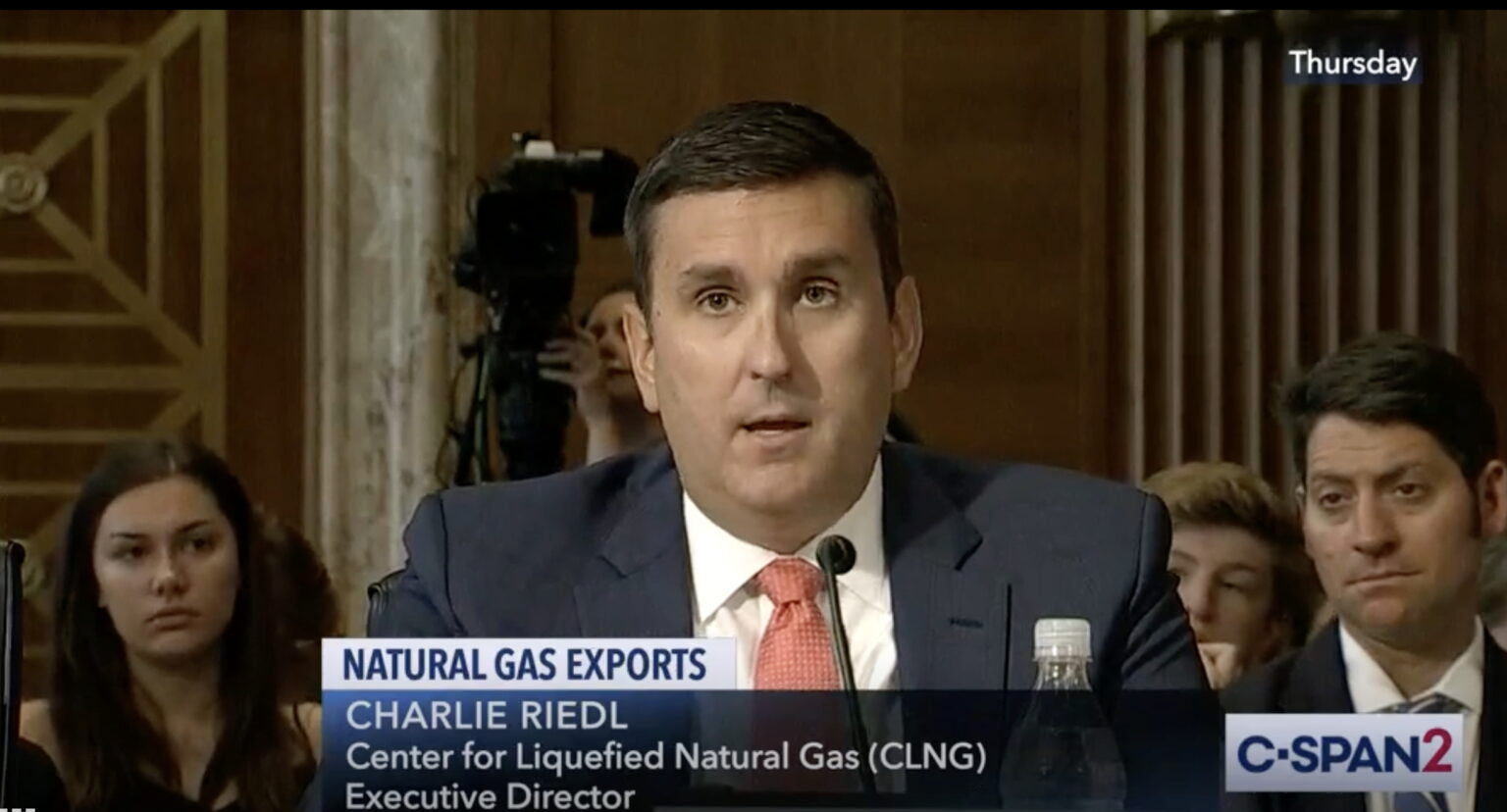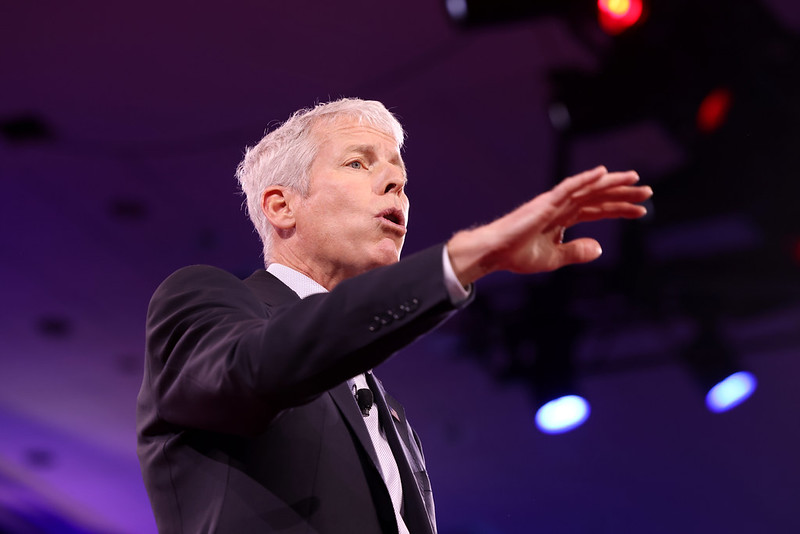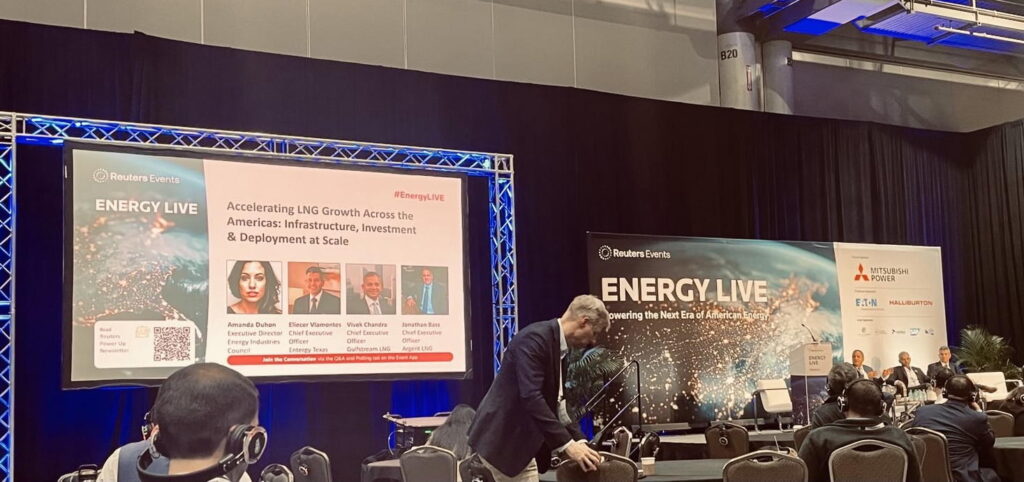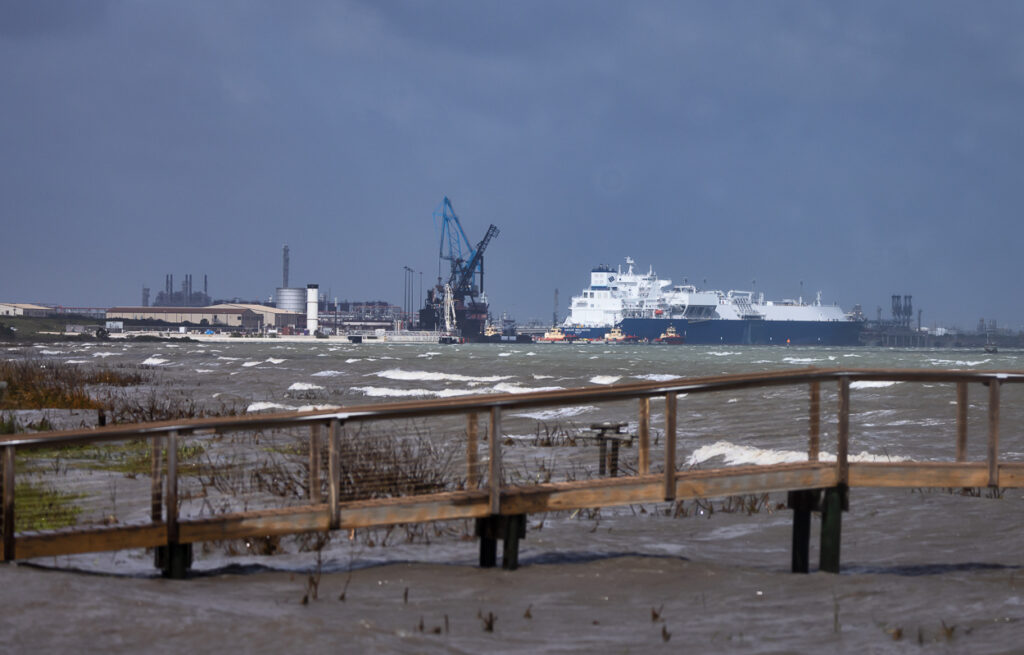UPDATE 7/29/2025: On July 28, the U.S. and EU announced a framework trade deal. It involves the EU pledging to buy $750 billion in U.S. oil, LNG, and nuclear fuel by 2028. Energy analysts have called that goal unrealistic, with unclear implications for the EU’s methane pollution standards.
As Europe races toward a U.S. trade deal, lobbyists for America’s biggest natural gas exporters are pushing to carve a major loophole in the EU’s methane rules, using ongoing trade and tariff disputes in a campaign to weaken Europe’s climate standards.
“It’s very clear that the industry and the State Department are putting a lot of pressure on the EU to just give us a pass on this methane rule and commit to our dirty LNG,” said Lorne Stockman, research co-director for Oil Change International and co-author of a new report detailing climate impacts from five U.S. liquefied natural gas (LNG) projects.
“And we certainly hope the EU does not buckle to that pressure. But it’s extremely concerning because there’s a lot at stake.”
With the August 1 deadline for a trade deal with the Trump administration fast approaching, LNG exporters are worried that the U.S. natural gas industry won’t be able to answer a basic question they’ll face from EU regulators: How much methane pollution comes from your LNG?
“There’s uncertainty about the U.S.’s ability to actually comply with the methane regulations,” Charlie Riedl, executive director for the Center for Liquefied Natural Gas, said at the Reuters Global Energy Transition conference on June 26. “That has slowed down our ability to actually finalize those deals. It has slowed down those projects that are close to reaching a final investment decision.”
About 75 percent of U.S. LNG exports currently go to Europe, Riedl said – but the Center for LNG, whose members include BP, Chevron, Shell and Total, says American gas exporters probably can’t meet Europe’s standards on methane pollution or even accurately measure the climate-altering pollution created by a given cargo of LNG.
“We’re going to have significant challenges meeting the letter of the law with those requirements,” Riedl said. He noted that because of the way those requirements are written, by the end of this decade, the U.S. LNG industry could see significant challenges to expand into EU markets if the rules are not revised or relaxed.
Already, as trade talks continue, LNG deals have begun stalling out over methane concerns, Riedl said — adding that some companies are simply gambling that American exporters will eventually find a way around the rules.
“What we’ve seen is the large portfolio participants taking a flier on this and saying we think that we’re going to be able to get gas there,” he said. “We think that we’re going to be able to revise the methane regulations or get them relaxed or some sort of equivalency put into place to allow them to ultimately get that gas there.”
The push to let American LNG exporters off the hook has reportedly found its way into ongoing trade talks between the Trump administration and the EU – though it’s not yet clear where those negotiations will land.
An early draft trade deal called for a methane rules carveout for U.S. exporters, The Wall Street Journal reported in June. But, the newspaper later reported, European Commission President Ursula von der Leyen responded to press questions about that possibility by saying the EU’s sovereignty over its decision-making process is “absolutely untouchable.”
The 2024 EU methane rules are slated go into full effect by 2030. Any LNG import contracts signed or renewed from then on will require methane pollution limits, in addition to disclosures.
If the LNG industry doesn’t get its way during the Trump administration’s ongoing tariff showdown, that doesn’t mean it’s game over, Riedl suggested at the Reuters conference.
One idea is that EU member states could undercut enforcement of the EU’s methane standards by making the penalties vanishingly small — despite language in the regulations calling for fees to have a “significant deterrent effect.”
“I hear from member states of the European Union that say, well, okay, fine we’re just gonna make the fee a dollar and move on and let the Commission try to tell us what to do,” Riedl said. “I think that there are ideas around this that make it incredibly challenging for the European Union to actually enforce this at the country level.”
Measuring Methane
At the heart of the problem for the LNG industry sits one simple question: Just how much natural gas escapes from America’s maze of gas wells, pipelines, infrastructure, and equipment that carries the fossil fuel from the oilfield to the burner tip?
Methane, the molecule that makes up the vast majority of natural gas, isn’t visible to the eye. You can’t smell it – the “smell of gas” comes from odors added intentionally to make its presence known. It is, as the term “natural gas” implies, a gas at room temperature – to make it liquid, it needs to be “supercooled” to temperatures you’d be more likely to find on Jupiter or Saturn than on Earth.
Gas pipelines are often buried underground or located out of sight – and there are millions of miles of natural gas pipelines in the U.S. alone. A loose fitting, a damaged valve, a worn seal anywhere in that system can cause natural gas to leak – plus plenty of oilfield equipment is built to deliberately “vent” gas.
That means figuring out how much gas escapes from that sprawling system poses a major challenge.
“The U.S. Environmental Protection Agency estimates that roughly 1 percent of oil and gas produced winds up leaking into the atmosphere as methane pollution,” MIT Technology Review reported last year, as new ground aerial surveys once again found the EPA’s estimates remain far below what real-world data shows. “But survey after survey has suggested that the official numbers underestimate the true extent of the methane problem.”
Plus, the U.S. natural gas pipeline network is not designed in a way that makes it possible to trace a given methane molecule from the well to the buyer.
“We have one of the largest, most convoluted, complex oil and gas systems in the world in this country,” Oil Change International’s Stockman told DeSmog. “This is a vast, vast system that involves literally millions of potential leakage points.”
All of that methane pollution carries with it enormous costs for the climate, according to a recent report from Global Witness.
Europe’s imports of U.S. LNG since 2022 could cause more than €100 billion (or roughly $116 billion) in “climate-driven extreme weather and disasters,” based on the Biden administration’s social cost of carbon and LNG industry groups’ estimates for greenhouse gas emissions, the report found.
‘Name and Shame’
Under rules currently being phased in by the EU, anyone who imports natural gas into the EU will eventually need to report data on their methane pollution.
That means European companies will need to collect methane emissions data from their suppliers, tracing where their gas came from and just how much climate-altering methane escaped along the way.
Those methane rules are “the EU’s main tool for tackling the second-most significant climate pollutant” after carbon dioxide, according to a June open letter signed by dozens of major European environmental groups.
Shortly after the EU’s methane rules went into effect, oil and gas lawyers began warning clients about the impacts for deal-making, especially for proposed new LNG terminals.
“We are already seeing the EU Methane Regulation impacting the negotiation of new LNG sale and purchase agreements,” the law firm Baker Botts warned in a client update in September 2024, describing the EU’s plans to make companies’ methane data public. “In short, the EU Methane Regulation includes a suite of reporting obligations that enables the Commission to ‘name and shame’ Importers.”
Natural gas producers have long maintained that they don’t need regulation or public shaming to curb leaks, and that voluntary measures – which, after all, help them retain product they can sell – are sufficient incentive to find leaks.
But that theory hasn’t seemed to pan out in the real world, environmentalists say.
“Methane emissions have continued to grow in the oil and gas sector, more or less in line with production growth,” Stockman said. “So I think we have a fundamental problem that looks fixable on paper but in reality, there are all sorts of issues with actually fixing it.”
He pointed to Oilfield Witness’s work documenting ongoing methane leaks out in the oilfield using specialized cameras that can make methane pollution visible.
“They see the same pieces of equipment emitting methane week on week, month after month,” Stockman said. “Unaddressed. Unfixed. The companies do not get penalties.”
At the federal level, there’s little sign that will improve. “This administration is getting rid of the methane regulations that the Biden administration attempted to put in place,” Stockman told DeSmog.
That lack of regulation undercuts one of the central selling points for natural gas that’s produced in America – that it’s better to buy from here than from, say, Russia.
“This is not a country that is producing oil and gas better than anyone else,” Stockman said. “This is a myth.”
Plus, U.S. LNG doesn’t just compete against other natural gas exporters like Russia. Natural gas is one energy source among many. In fact, Riedl’s workshop on LNG was held at the Reuters Global Energy Transition conference, where much of the conversation centered on renewable energy and nuclear power.
A new report from Greenpeace, Earthworks, and Oil Change International, co-authored by Stockman, borrowed modeling methods from the U.S. Department of Energy to assess the overall climate impacts of developing new LNG projects – and found LNG doesn’t just displace other fossil fuels, it can also displace renewable energy. That, in turn, meant that all of the LNG projects reviewed in the report led to worse climate outcomes.
“EU leaders must break free from fossil fuels and take control of Europe’s future by investing in a renewable, secure and peaceful energy system,” said Thomas Gelin, a Greenpeace EU climate and energy campaigner. “A ban on all new fossil fuel projects in the EU would be the right first step, and the EU should certainly not consider funding oil and gas projects abroad.”
Demand Doubts
Europe’s methane disclosure requirements aren’t the only thing worrying would-be LNG exporters in the U.S.
One major sticking point, Riedl said at the Reuters conference, is the belief that Europe’s demand for natural gas will simply wane before new LNG terminals can get off the ground.
“What I don’t hear from my membership is concern about the ability to finance,” he said. “What I hear is the ability to find long-term [LNG sales] contracts. That’s where the rub is right now . . . especially from Europe, it’s like, ‘Ah, well, we’re going to be off of gas by 2035.’”
“We can show all of the demand models we want,” Riedl said.
Russian Gas Plays a Role
Another major piece of the geopolitical puzzle is, of course, the war in Ukraine and the question of Russian gas.
“I think everyone wants to see the war come to an end,” Riedl said. But he acknowledged the impact a resumption of Russian pipeline gas flows would have for U.S. exporters, saying Russian pipeline gas would cost Europe “pennies on the dollar” relative to U.S. LNG. “Let’s just not sugarcoat what that means. I think that that directly undercuts U.S. LNG into the region.”
Riedl said it’s not all “doom and gloom” for the U.S. LNG industry. “Let me just make sure that I’m also not just painting this picture that all we’re doing is facing this horrific uphill battle,” he told the Reuters conference.
But he also ticked off a series of concerns related to U.S. regulations — including ongoing regulatory uncertainty.
“If we can’t get people to trust the regulatory process in the United States, we have a significant headwind,” he added. “And we haven’t even started to talk about meeting some of the workforce challenges, changing costs because of steel and aluminum tariffs that are in play.”
And then there’s Trump’s chaotic approach to trade talks.
“They’re putting pressure on foreign countries to buy more U.S. gas while also making it difficult for U.S. gas exports to actually go — which is a little bit of the M.O. of this administration,” Riedl said.
Stockman expressed concern that Europe may bend to Trump’s pressure on the methane rules.
“We’re seeing EU negotiators wobble and consider how can they deal with this threat,” he said. “The EU exports a lot of stuff to the United States and they don’t want to scupper those markets.” But he called for European negotiators to stand firm.
“I think they should implement their methane rule very strictly,” said Stockman, “and not give carve outs.”
Subscribe to our newsletter
Stay up to date with DeSmog news and alerts






